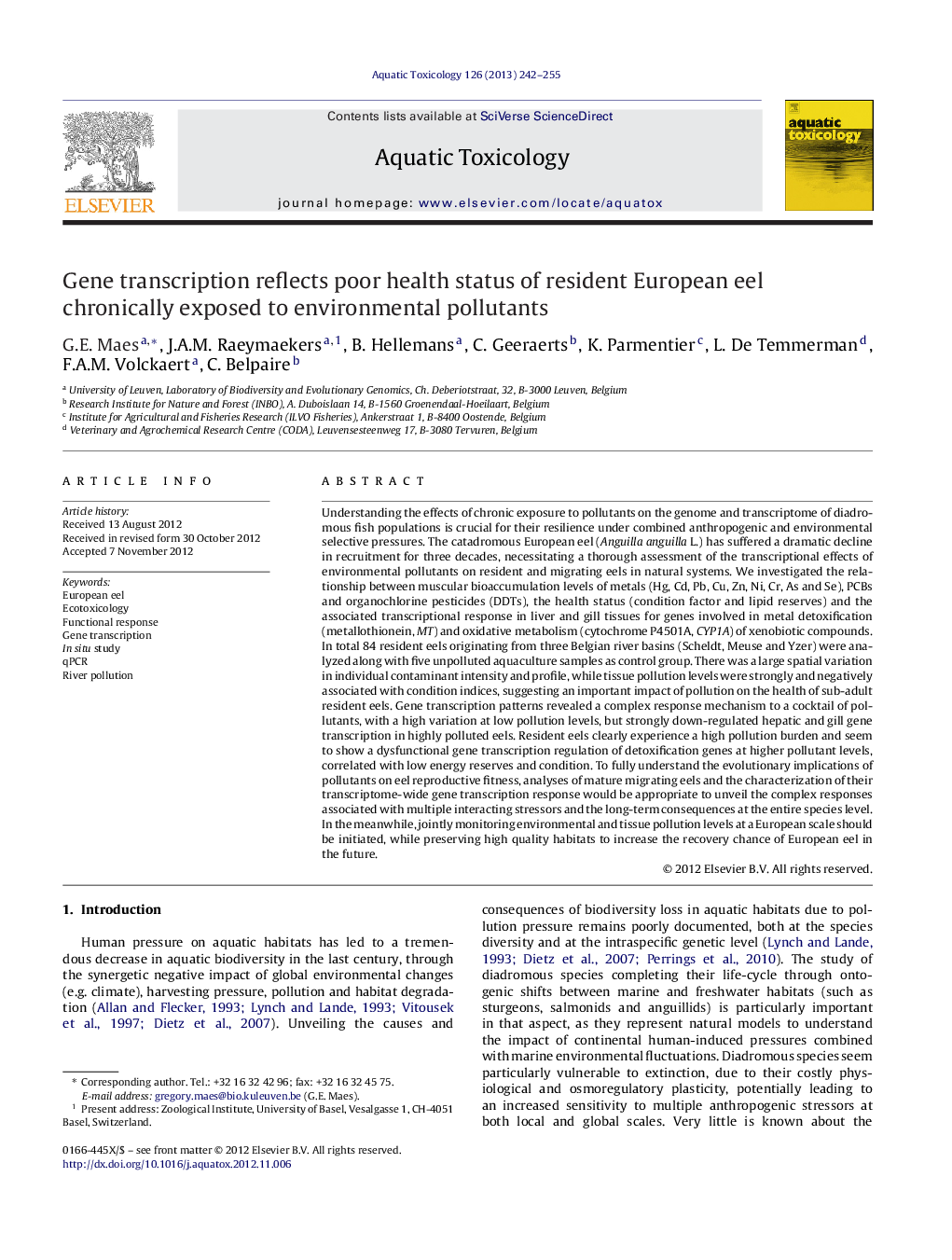| کد مقاله | کد نشریه | سال انتشار | مقاله انگلیسی | نسخه تمام متن |
|---|---|---|---|---|
| 4529607 | 1625970 | 2013 | 14 صفحه PDF | دانلود رایگان |

Understanding the effects of chronic exposure to pollutants on the genome and transcriptome of diadromous fish populations is crucial for their resilience under combined anthropogenic and environmental selective pressures. The catadromous European eel (Anguilla anguilla L.) has suffered a dramatic decline in recruitment for three decades, necessitating a thorough assessment of the transcriptional effects of environmental pollutants on resident and migrating eels in natural systems. We investigated the relationship between muscular bioaccumulation levels of metals (Hg, Cd, Pb, Cu, Zn, Ni, Cr, As and Se), PCBs and organochlorine pesticides (DDTs), the health status (condition factor and lipid reserves) and the associated transcriptional response in liver and gill tissues for genes involved in metal detoxification (metallothionein, MT) and oxidative metabolism (cytochrome P4501A, CYP1A) of xenobiotic compounds. In total 84 resident eels originating from three Belgian river basins (Scheldt, Meuse and Yzer) were analyzed along with five unpolluted aquaculture samples as control group. There was a large spatial variation in individual contaminant intensity and profile, while tissue pollution levels were strongly and negatively associated with condition indices, suggesting an important impact of pollution on the health of sub-adult resident eels. Gene transcription patterns revealed a complex response mechanism to a cocktail of pollutants, with a high variation at low pollution levels, but strongly down-regulated hepatic and gill gene transcription in highly polluted eels. Resident eels clearly experience a high pollution burden and seem to show a dysfunctional gene transcription regulation of detoxification genes at higher pollutant levels, correlated with low energy reserves and condition. To fully understand the evolutionary implications of pollutants on eel reproductive fitness, analyses of mature migrating eels and the characterization of their transcriptome-wide gene transcription response would be appropriate to unveil the complex responses associated with multiple interacting stressors and the long-term consequences at the entire species level. In the meanwhile, jointly monitoring environmental and tissue pollution levels at a European scale should be initiated, while preserving high quality habitats to increase the recovery chance of European eel in the future.
► We investigated the relation between pollutants bioaccumulation levels and the health status in European eel.
► We measured the associated transcriptional response in liver and gill tissues for metallothionein and cytochrome P450.
► We found a large spatial variation in contaminant profile, correlated with low energy reserves and condition.
► Gene transcription patterns reveal a complex response mechanism to a pollutant cocktail.
► Yellow eels show a dysfunctional gene transcription regulation of detoxification genes at higher pollutant levels.
Journal: Aquatic Toxicology - Volume 126, 15 January 2013, Pages 242–255